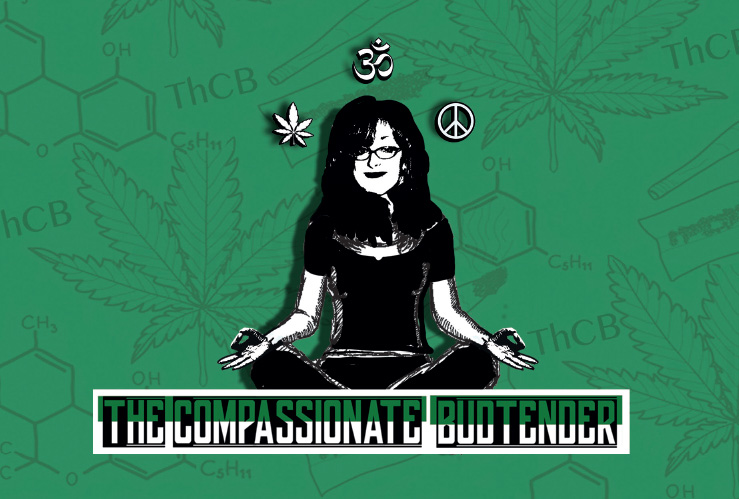
Hey, everyone! I’ve recorded new iRest® Meditations for you! See them below…
This is my 8th year leading iRest® classes and workshops, so it was time for some fresh practices! Here are three new practices to fit into your schedule: a five minute Super Shortie for anxiety and overwhelm, a ten minute Anytime practice, and a nice fifteen minute Sweet Dreams practice to help you sleep deeply.
Look. Things are tough for E V E R Y O N E right now. We need all the help we can get to manage stress and keep moving toward our hearts’ deepest desires. So treat yourself. The download per practice is $5/each — or all three for $10. Contact me if you can’t afford the cost. No one will be turned away for lack of funds.
The Fascinating Human Brain
I’ve been working in the cannabis industry for almost seven years, leading Microdosing & Mindfulness and Medicate & Meditate classes for the better part of them. Though most schools in yoga and meditation ask the practitioner NOT be intoxicated when practicing, there is some terrific work out there detailing the function of the endocannabinoid anandamide (endo meaning the cannabinoids we make in our bodies) — and its sister phytocannabinoid THC (phyto being cannabinoids in the cannabis plant) — in helping us to forget. Forgetting is key in healing from trauma. Forgetting helps us get more readily into the ever-present moment, which is where the best healing occurs.
Though cannabis research has some catching up to do (and it’s happening very quickly), psychedelics research shows that microdosing psychedelics (as well as going for a walk in nature, singing your favorite song, and meditating) can switch off the Default Mode Network (DMN) and switch on the Task Positive Network (TPN). It stands to reason, then that microdosing cannabis, a milder psychedelic, (a microdose being under 5 milligrams) can help jump-start a practice, provided of course, that one can consume batch-tested cannabis safely and legally, and with a recommendation from a doctor).
The DMN is the self-referring network we’re in most of the time –when we’re distracted and checking our phones constantly. When we’re judging others or wondering what they’re saying about us. When we’re regretting or fretting about the past or future. When we’re annoyed at people in the line at the grocery store, or yelling at someone who’s cut us off in traffic (my DMN thrives in rush hour). When we’re running the same old tapes about our insecurities about ourselves. Basically, when we’re in our ego-, separated-, or small-self.
When the Task Positive Network, (TPN) switches on, we feel connected. We’ve all had these moments — when we feel a breeze on our face or wonder at the moon or stars in the sky. We take a deep breath and feel we can finally relax, that we’re back to our true selves. We are observing and experiencing things in real time, in present-moment awareness. When we’re not reliving what’s happened or trying to figure out what’s going to happen in the future, that’s the the brain operating from the TPN! And moving from the DMN to the TPN is what moves us from feeling anxious and depressed, to feeling more grounded and empowered.
Try iRest® by itself a few times. Give the mind a little time to get over its squawking judginess. Show up for yourself. iRest® Meditation is a beautiful way to do so. Choose any one for $5, and below, all three for $10. Om. Shanti.
Jaene’s 5minute Super Shortie iRest for anxiety and overwhelm
Too much coming at you at once? Need a quick fix to feel grounded and a sense of wellbeing? Try this quickie, designed for use anywhere. Just pop in your ear buds, find a little corner where you can be along for five short minutes, and find the present moment!
$5.00
Jaene’s 10minute Anytime iRest
Take ten and find your flow. The more you practice, the easier it gets. This iRest is designed for anyone to use – anytime! Restore and rejuvenate. Practice makes the brain so happy!
$5.00
Jaene’s 15minute Sweet Dreams iRest for Sleep
The day is long and you’ve been bombarded by all the things. Sometimes it’s hard to shut it down and get to that nice drowsy place and drift off to a restorative night’s sleep. Try this iRest, designed to end quietly and help you give over fully to a grand 40 winks. Give it a few nights. Before long, your smart will brain will know what’s coming and you’ll fall asleep before the practice is over!
$5.00
Jaene’s Triple Treat iRest Combo
Get all three iRests – 5minute, 10minute, and 15minute practices. Download them to your phone, carry them with you, and use them when you need them. See how you’re able to float above it all when you’ve fortified your ground of wellbeing.
$10.00

